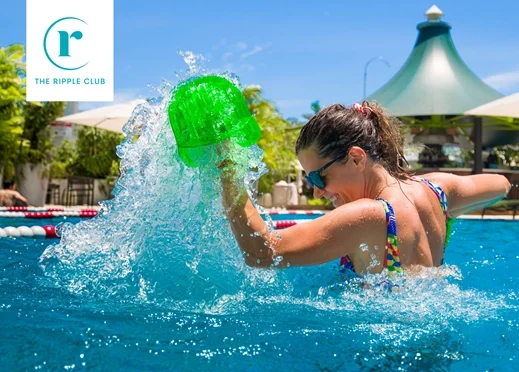Group Ex
Stronger for Longer: How Group Ex Instructors can Thrive without Burning Out

If you’ve been teaching group exercise for a while, you’ve probably felt it – that creeping fatigue, the raspy voice, the aching joints that don’t quite recover between classes. Freelance instructors often fall into the trap of believing that more classes mean more success. But after more than 13 years in this industry (and two stress fractures later), I’ve learned that longevity isn’t about teaching more – it’s about teaching smarter.
Here are five ways to protect your energy, maximise your revenue, and stay in love with teaching for years to come:
01
Balance Your Energy: Alternate High and Low Intensity Classes
Your body is your business. Teaching back-to-back HIIT classes might feel rewarding, but over time, it takes a serious toll – not just physically but vocally too. To stay in the game longer, balance your schedule with lower-intensity formats such as yoga, Pilates, or mobility sessions. These classes still let you connect deeply with your participants without leaving you drained.
And if you love high energy but need to give your body a break, consider adding aqua-based classes to your schedule. They’re low-impact, easier on the joints, and you don’t have to do the full workout yourself. You’ll still get to coach, motivate, and inspire – but without pushing your body past its limits.
02
Mix High and Low Impact Work
If your teaching style involves doing the workout alongside your participants (like in Les Mills or dance-based programs), be strategic about recovery. Pair these with lower-impact formats where you can demonstrate rather than perform the entire class. This approach allows you to maintain your visibility and passion without overtraining.
Remember – your clients come for your guidance and energy, not to see you beating your personal best. You can be an incredible coach without being the one sweating the hardest in the room.
03
Plan Your Schedule Logically, Not Just Financially
Many freelance instructors fall into the “time is money” trap – packing their schedule with as many classes as possible. The smarter move? Prioritise efficiency. Cluster your classes by location to reduce commuting time, and plan your high-energy classes earlier in the week when you’re freshest.
Back-to-back classes are great for maximising your time, but set limits. If you’re teaching high-intensity sessions, three back-to-back is the upper limit if you plan to do it week in and week out. Beyond that, your body will start keeping score – often in the form of injury or burnout.
04
Protect Your Recovery: Avoid Late-Night/Early-Morning Combos
It might seem doable to finish a 9 p.m. class and be back on deck for a 6 a.m. start – until it’s not. Lack of recovery time is one of the biggest contributors to chronic fatigue among instructors. Schedule at least 8 to 10 hours between your last and first class of the day whenever possible.
Your sleep is your secret weapon. It fuels your voice, your mood, your coordination, and your motivation – everything your clients rely on you for.
05
Keep One Day Completely Free (Yes, Completely)
This one’s non-negotiable. Even if your diary looks tempting, even if that one extra class seems too good to pass up – leave yourself one full day a week with no teaching, no clients, and no admin. You’ll come back stronger, fresher, and with the kind of energy your clients feel the moment you walk into the room.
Rest is not a luxury. It’s a long-term investment in your career and your wellbeing.
Let’s Build a Career That Lasts
When I first started teaching, I was doing over 25 HIIT classes a week. I thought saying “yes” to everything was the path to success – until my body said “no.” It took years (and a few painful lessons) to learn that longevity in this industry comes from balance, not hustle.
Teaching group exercise is one of the most fulfilling careers out there. You change lives, lift people’s spirits, and create community every single day. But to keep doing that – to truly raise the bar – you need to care for the person behind the mic as much as the people in front of it.
So build your schedule with intention. Blend your formats. Protect your voice, your joints, your energy. You’ll not only last longer – you’ll teach better, earn smarter, and love what you do for years to come.

Ready to Teach Smarter, Not Harder?
Avoid burnout and protect your energy by adding low-impact aqua exercise to your teaching toolbox. Join our online or hybrid aqua instructor certification, learn to lead sustainable, joint-friendly classes — and build a career that lasts.

